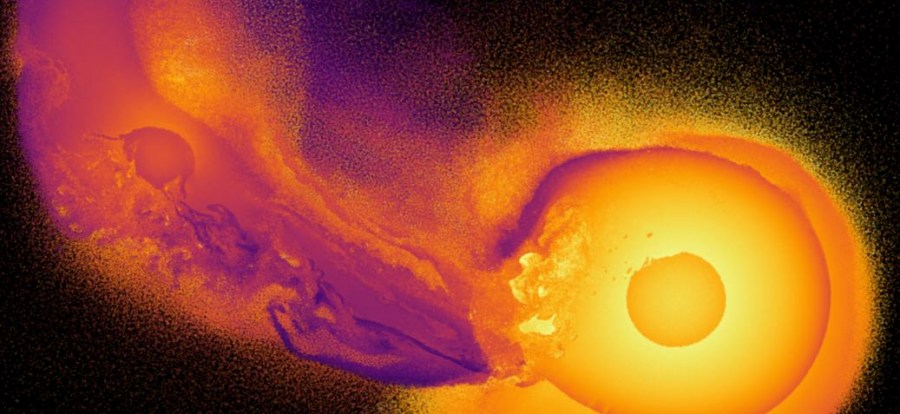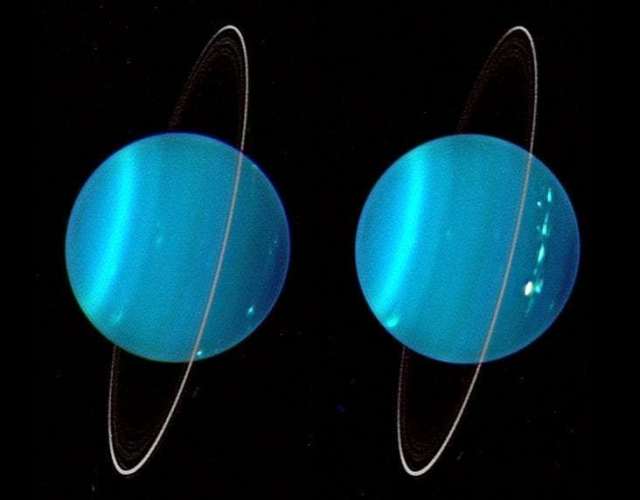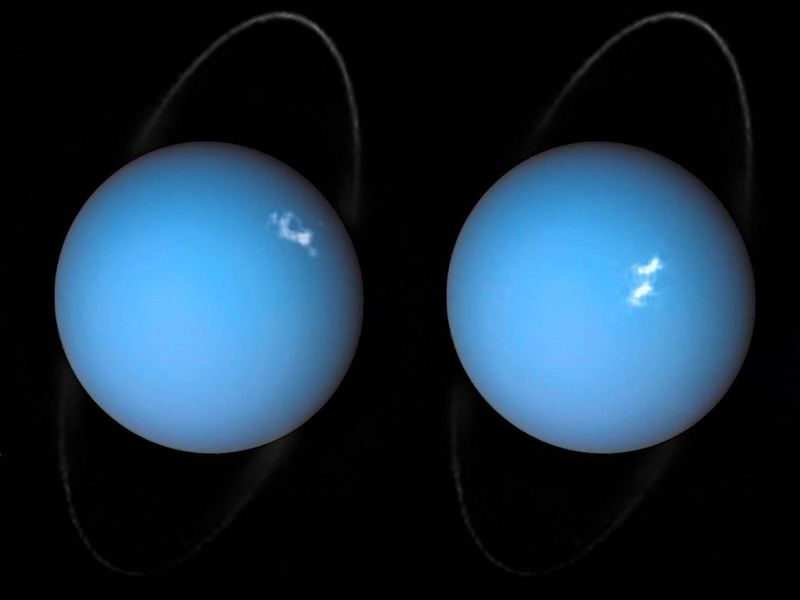SAS Lecture: Giant Impact Simulations: Why Does Uranus Spin on its Side?
About this event :



Uranus spins on its side. With its spin axis pointing almost at right angles to those of all the other planets, the common explanation is that a proto-planet at least as large as the Earth crashed into the young planet, sending it spinning in this new direction.
Giant impacts like these were common events in the early solar system and help explain many other mysteries such as the origin of the Moon, as well as features of the exoplanets we see around distant stars.
Jacob’s team run supercomputer simulations with millions of particles to re-create and study these cataclysmic events.
In this talk, Jacob will focus on our recent work with Uranus and how this violent impact might also explain the planet’s extremely cold surface, strange magnetic field, and unusual satellite system.
The top image is a mid-collision snapshot from a 100 million particle simulation of a grazing giant impact onto the young planet Uranus, and the animation shows another of these high resolution collisions in action.
The colours show the particles’ internal energy (similar to their temperature).
When Who Where
- Date: 20th October 2019,
- Time: 7pm.
- Speaker: Jacob Kegerreis.
- Venue: Will take place at the Cygnus Observatory (WWC Discovery Room).
Our speaker
Our speaker Jacob Kegerreis is researcher at Durham University and is a member of the Department of Physics and Institute for Computational Cosmology
Google Map
Your host : Martin Kennedy
